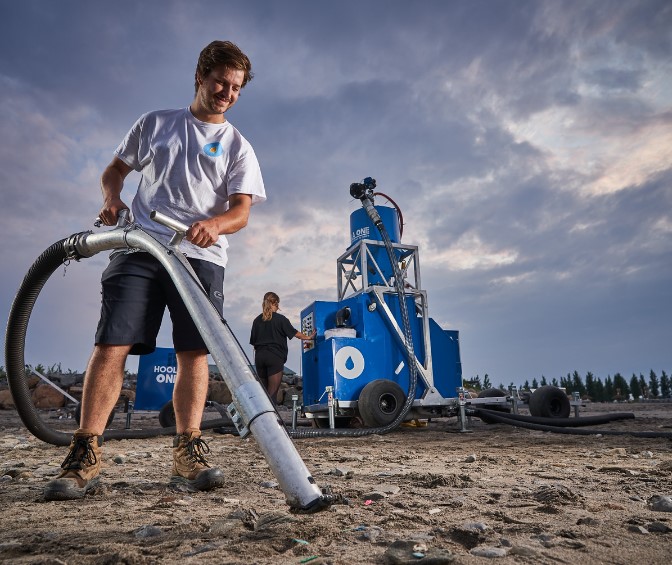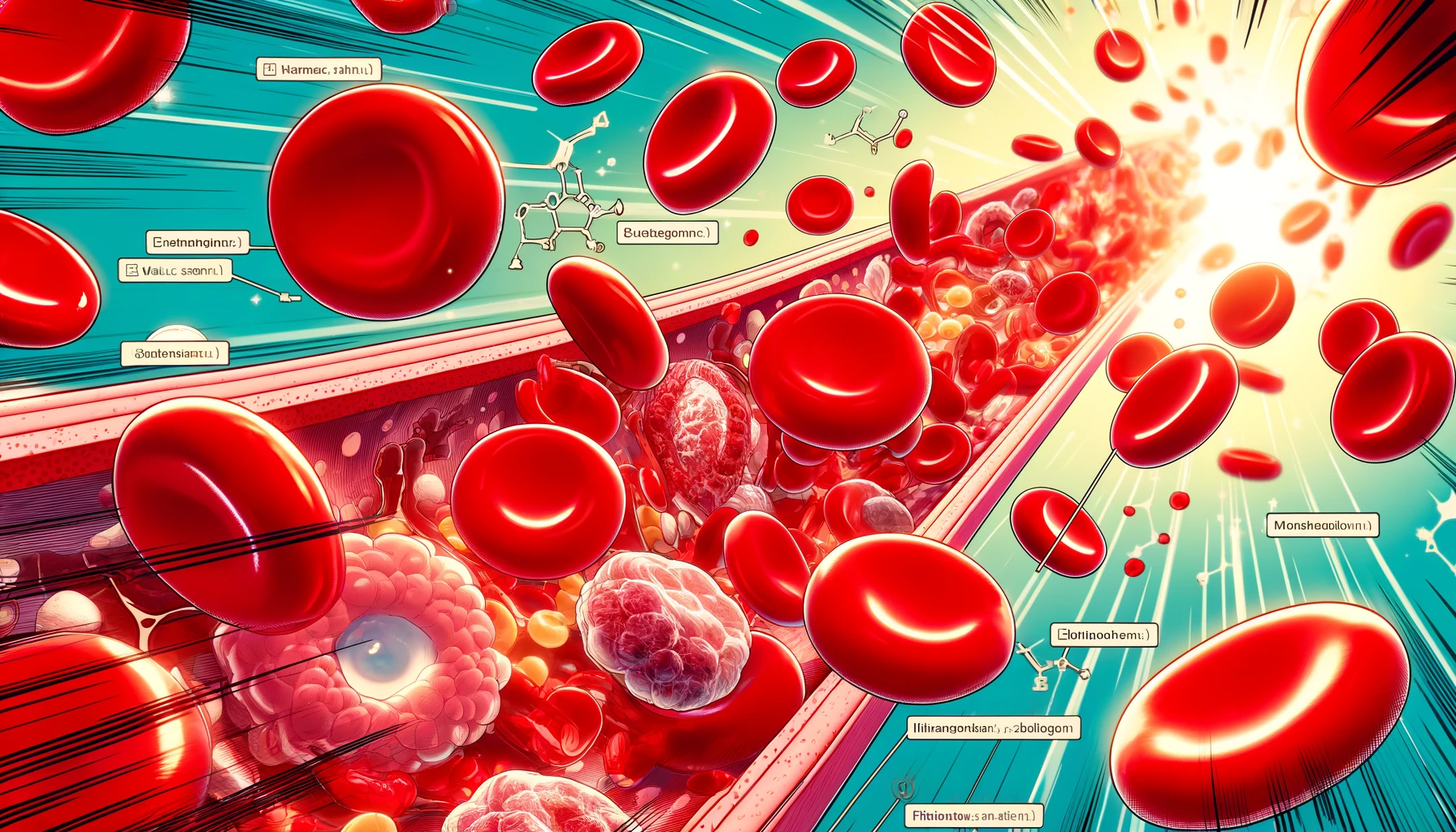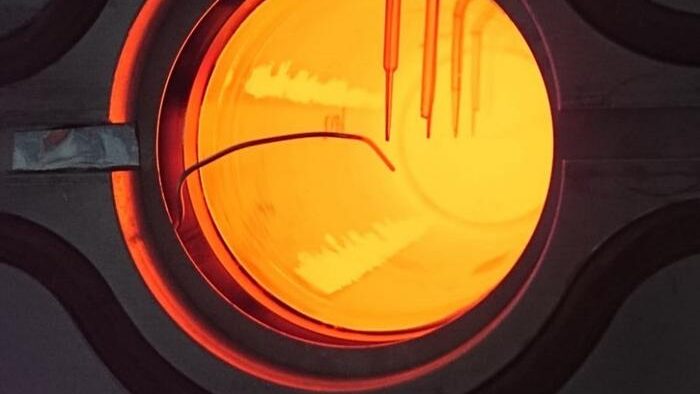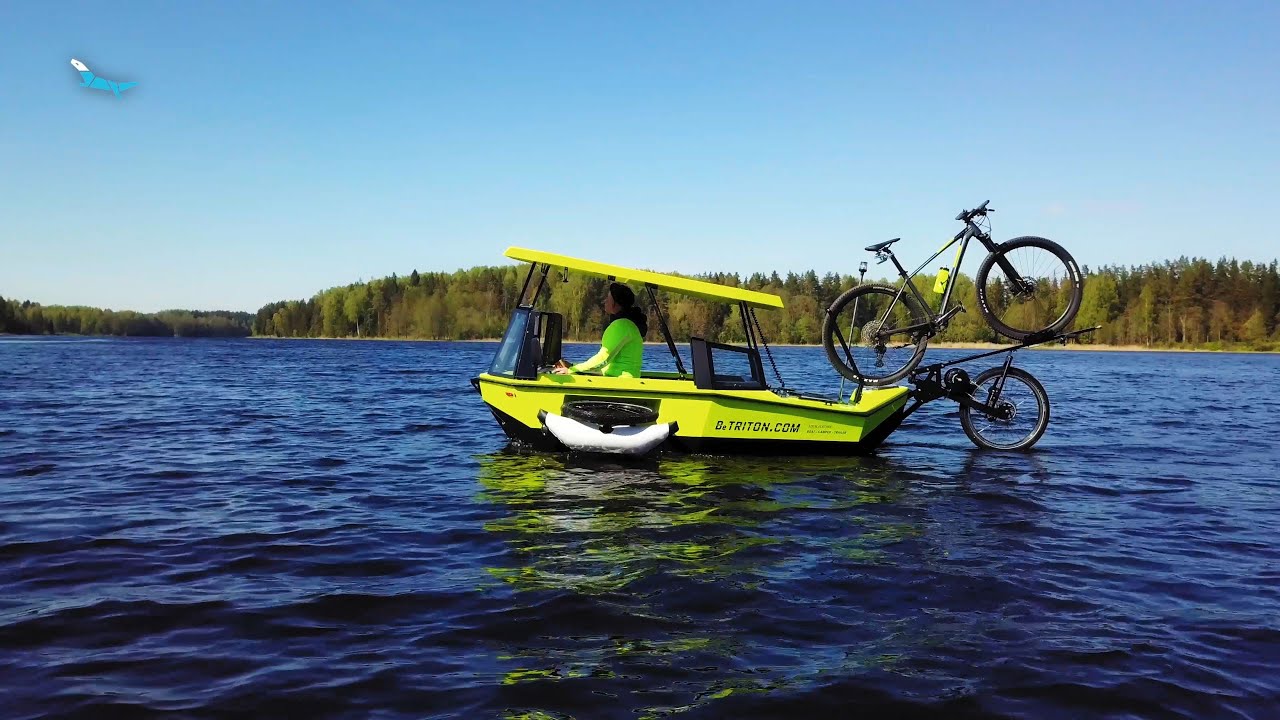By Charles Carter, 24/10/22
Canadian startup Hoola One has developed a hoover and filtration system for removing microplastics from beach sand to help solve the growing pollution problem.
The idea started out as a 2017 engineering masters project at the University of Sherbrooke.
The team aimed to design a machine to collect plastic particles accumulated on Kamilo Beach in Hawaii.
And in 2019 the prototype was delivered to the Hawaii Wildlife Fund and is still used to clean the beach to this day.
The company now has three different models addressing micro and macro plastics including a portable backpack device. They are currently testing their new crop at beaches in US and Canada.
How does it work?
The HO Micro model shown in the video consists of an 18 metre suction hose and four-module trailer-mounted machine.
The innovation is designed to collect 0.01 mm to 7.5 cm plastic pieces either on the surface of the sand or mixed at depth.
The sand-plastic mixture is first combined with water and the plastic floats to the top.
The container is then filled with more water such that it overflows carrying the plastic at the surface with it into a collection trough.
The plastic is subsequently drained and then recycled off-site. The cleaned sand and any organic matter contained within is returned to the original location.

What are the potential benefits?
The Ocean Cleanup estimates that 107 and 290 million metric tons of plastic were emitted into the ocean between 1950 and 2015.
They say 57 percent of all plastic entering the ocean from waterways floats, and of that, 97 percent lands on shore. The remaining 3 percent makes it way to ocean garbage patches.
So based on these figures, there is potentially over 160 million tons on plastic lying on beaches across the globe.
If Hoola One’s innovations are scaled and rolled out far and wide they could help to make a dent in this mammoth clean up task for humanity.
Questions for you. Comment below
- First thought that comes into your head?
- Pros and cons according to you?
- Other applications of this approach?
- What could this be combined with?
Links
https://theoceancleanup.com/updates/the-quest-to-find-the-missing-plastic/




First thought: cost for small or large groups or communities?
Pros and cons: its not passive.
Other applications of this approach? This could work on other materials lighter than water that justs floats out to the water system.
What could this be combined with? The larger river / ocean collector systems that pick up visible debris overtime.